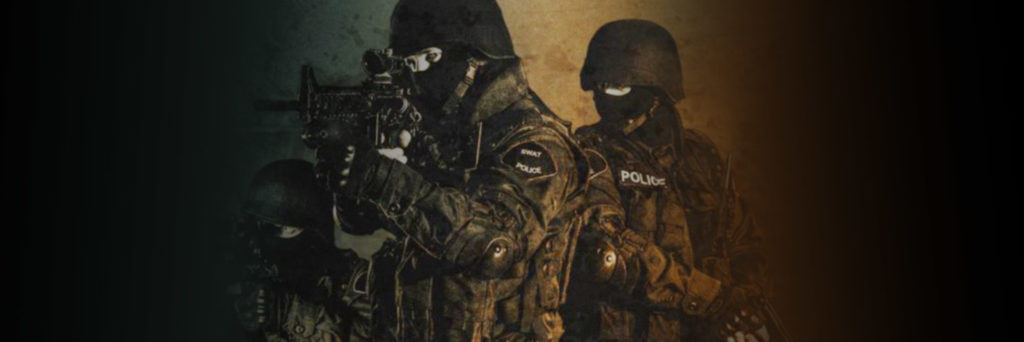Finnish game studio Critical Force designed its iOS and Android mobile first-person shooter game Critical Ops with esports in mind. After amassing 10 million downloads, the company partnered with Korean game development and publishing conglomerate NHN Entertainment last September, which invested $4.3 million in the small independent studio.
Kasperi Kivistö, community manager at Critical Force, told AListDaily that the studio began experimenting with community-level Critical Ops tournaments early last year. Since then the company has focused on building a sustainable grassroots environment while working with partners to increase the players and viewership of competitive Critical Ops.
“Most of the competitions take place in North America and Europe, and it makes sense for us to focus especially on these regions,” Kivistö said. “Nonetheless we have active communities in other regions as well, and we want to offer them a chance to compete too.”
Critical Force has been slowly and steadily increasing the prize money in these tournaments. Currently, the biggest online tournaments have a prize pool of 2,000, but Kivistö said the company will increase this amount in the future.
“This year we’re further establishing our roots as the competitive mobile FPS space,” Kivistö said. “Tournaments this year will be mostly online and organized by companies like Valiance and ESL. We’re also looking to organize a couple of live events to do some tests and prepare for the big push next year.”
That push will come with lessons learned from these internal and partner tournaments, as well as the larger esports and mobile esports ecosystems.
“When we first began experimenting with tournaments a year ago, we pretty much did what felt best for our game at that moment,” Kivistö explained. “Since then we’ve gotten a lot of tips and thoughts from other developers, as well as organizations that have entered the Critical Ops competitive scene.”
While formats for esports tournaments are somewhat universal, Critical Force prefers to focus on simplicity when choosing bracket types for its tournaments.
“From a general level, we follow both esports as well as traditional sports to help us create memorable stories around events and teams, and through that, develop a sustainable ecosystem for competition,” Kivistö said.
Critical Force has the original creator of Counter-Strike, Minh “Gooseman” Le, on its board of advisors and he has been helping the team with esports.
“Counter-Strike was one of the first competitive FPS games on PC and has set what we consider the standard for competitive FPS gameplay,” Kivistö said. “The action in Counter-Strike is tactical and realistic, and our aim is to provide a similar experience on mobile devices.”
That connection with Counter-Strike, and the newer Counter-Strike: Global Offensive, has attracted some CS:GO gamers to the competitive Critical Ops community. In addition, the tournament organizers and their staff have experience playing CS:GO.
To date, Critical Ops has over 15 million downloads and 500,000 daily active users playing the game.
That community has bypassed Twitch in favor of Mobcrush. Critical Force does a weekly community stream on Mobcrush and on Facebook. Kivistö said tournament organizers use Mobcrush and they’ve recently started streaming on YouTube with success.
“Although we’ve not expanded to Twitch yet, it doesn’t mean we won’t be there,” Kivistö said. “We’re looking to grow our presence on Twitch in the future. We’re currently working on a content creator program to support people spreading the word about our game. Instead of doing paid promotions through influencers, we try to focus on growing our own.”
With the game still in soft launch, Critical Force is developing crucial features to support the nascent esports community. In addition to the online tournaments and a few live events, collegiate esports is something the company is focusing on, especially in the US. The first Critical Ops college events will debut later this year.
Even at this early stage, a few professional teams have already ventured to Critical Ops. The biggest teams include Team Phoenix, Hammers eSports and GankStars. Kivistö said as this competitive scene grows, the studio hopes to attract other professional gaming organizations.
Next year will be the opportunity for brands and sponsors interested in reaching Critical Ops gamers.
“Currently we’re building our competitive scene, but tournament organizers and some teams have already partnered up with their own sponsors,” Kivistö said. “It’s clear there’s a lot of interest in this game from sponsors.”
That could be because mobile as a platform is cheap and easily accessible. Mobile also is a key way esports fans consume live events and other content. This opens the door to brand new competitors in the esports space.
“Everybody has a mobile device and you don’t need an expensive gaming PC to compete in a high tier,” Kivistö said. “The small size of the devices also allows instant LAN parties with your friends.”
Look for Critical Ops to entice CS:GO fans and compete with other mobile esports titles like Hearthstone and Vainglory next year.
